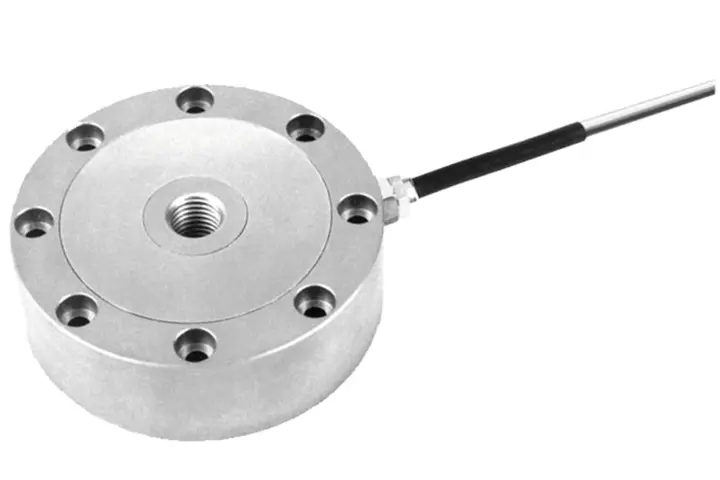How does a strain gauge force sensor function?
This is how a force sensor based on strain gauge technology functions:

This is how a force sensor based on strain gauge technology functions:

The force sensor based on strain gauge technology uses so-called strain gauges to measure the applied static and quasistatic tensile and compression forces. For the measurement of dynamic forces, on the other hand, piezoelectric technology is better suited.
The electric resistance of strain gauges changes upon even the smallest deformation in the lengthwise direction. This can be determined with very high precision and long-term stability with a Wheatstone bridge circuit. The strain gauge force sensor consists of a measurement body or spring body made of metal which is generally fitted with four glued-on strain gauges: with two strain gauges parallel to the force vector for measuring the change in length and two strain gauges transverse to the applied force for detecting the simultaneous narrowing or thickening of the measurement body. When a force is applied, two strain gauges thereby expand while the other two – affixed at a 90° offset – are compressed.
The electric output signal measured by means of a measuring amplifier changes proportionally to the applied force and can then be converted to a precise force measurement value.
Force sensors based on strain gauge technology supply extremely precise measurement data and also record even the smallest of forces drift-free. They are thus especially well suited for measuring static and quasistatic forces, whereby undesired ambient conditions, such as temperature fluctuations, are compensated for. The strain gauge structure can be installed in a number of ways – depending on the requirements of the application and force range.
The larger the nominal force, the larger the force sensor needs to be; this follows from the mechanical setup: for the measurement of small forces, softer and smaller spring bodies are used than for the measurement of larger forces.
Strain gauge force sensors are used in a variety of applications where longevity and thermal stability are required. Typically, the principle of strain gauges (Wheatstone Bridge circuit) can be designed to operate in a wide range of environments and typically offers high precision, and repeatable characteristics.
Typical fields of use for this type of sensor include, among others: